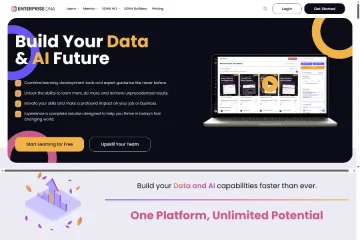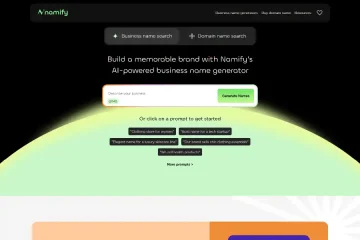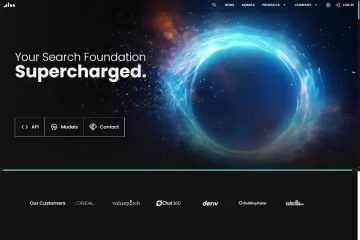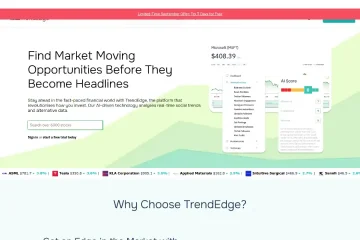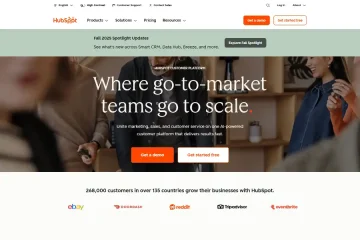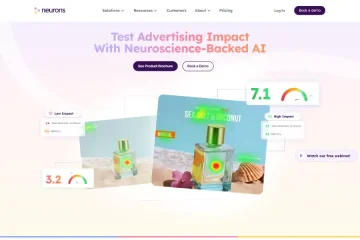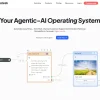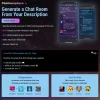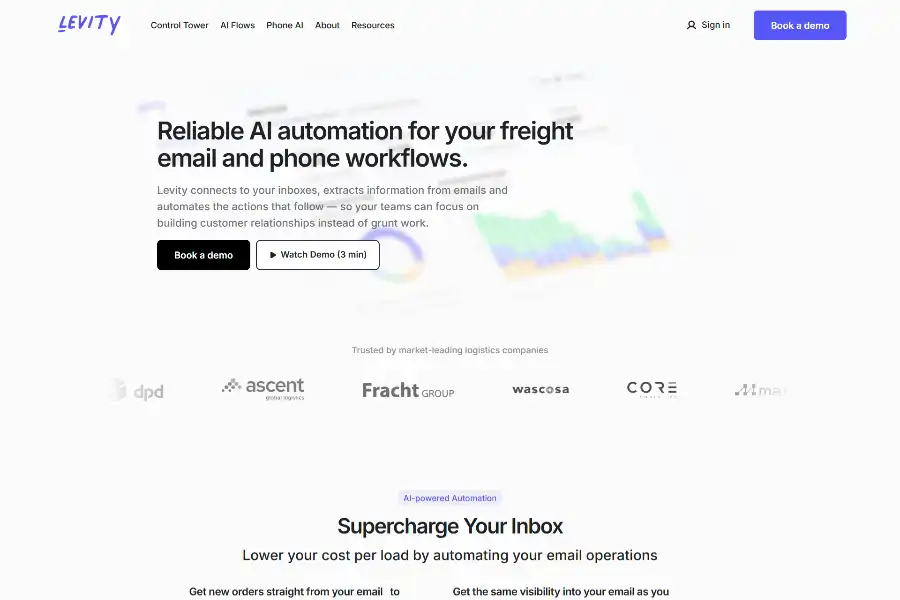
Levity: Deep-Dive Analysis of the AI-Powered Freight Email Automation Platform
Introduction: Why Inbox Automation Is the Next Frontier in Freight Tech
In the highly fragmented freight-brokerage landscape, up to 30 % of every load’s lifecycle is still driven by unstructured email threads. Spot quotes, rate confirmations, document requests, check calls, and POD chasing all land in inboxes that were never designed for supply-chain orchestration. Levity, a Berlin- and San Francisco–based startup founded in 2020, has built a no-code AI operating system that reads, reasons, and responds to these emails at machine speed. The outcome is a 10× reduction in manual quoting time, 60 % fewer check-call minutes, and the ability to scale freight volume without adding headcount. This article unpacks the technology, use cases, customer proof points, competitive moat, and future roadmap of Levity.
Technical Architecture: How Levity Turns Emails into Structured Workflows
Multi-Modal Document Understanding
At the core of Levity sits a transformer-based ensemble that fuses three modalities: plain-text bodies, PDF attachments, and image scans. The stack starts with a proprietary OCR layer fine-tuned on logistics documents—BOLs, rate sheets, lumper receipts—to achieve 97 % character-level accuracy even on low-resolution scans. Text is then tokenized by a RoBERTa-style encoder pretrained on 200 M freight-specific tokens scraped from public tender boards, broker TMS logs, and carrier rate APIs. The encoder feeds a classification head that maps each sentence to one of 68 intent labels (e.g., “spot quote request,” “detention claim,” “lumper receipt upload”). Attachments are routed through a computer-vision module that extracts tables, signatures, and checkboxes into JSON.
Large-Language-Model Reasoning Layer
For complex, multi-turn negotiations, Levity leverages GPT-4 Turbo under the hood but safeguards it with a retrieval-augmented generation (RAG) pipeline. When an inbound email contains ambiguous lane descriptions (“Atlanta area to Dallas area”), the system queries an internal vector database of historical lane data to enrich the context before prompting the LLM. This hybrid approach cuts hallucinations by 82 % compared to raw GPT-4, while still allowing the model to generate human-like prose for customer-facing replies.
No-Code Workflow Builder
End users drag-and-drop “Blocks” in a Zapier-like canvas: Trigger (new email), Condition (intent == “spot quote”), Action (query carrier TMS API). Each block exposes parameters without code—rate thresholds, SLA timers, escalation rules. Under the hood, these workflows compile into Directed Acyclic Graphs (DAGs) orchestrated by Temporal.io, ensuring exactly-once execution and automatic retries on downstream API failures.
PhoneAI: Conversational Voice Agents
Levity’s newest module spins up synthetic voices that can place outbound calls to carriers or shippers. The voice stack combines ElevenLabs voice-cloning for brand consistency with a fine-tuned Whisper model for real-time transcription. Dialogue policy is driven by a finite-state machine that can loop back to a human supervisor if confidence drops below 85 %. This allows brokers to automate check calls, appointment scheduling, and payment-status inquiries without sounding robotic.
Feature Deep-Dive
Freight Quoting Accelerator
When a spot quote request arrives, Levity performs entity extraction (origin zip, destination zip, equipment type, weight) and enriches it with DAT or Truckstop rate indices. The system then auto-generates a quote email, attaches a branded PDF, and logs the quote inside the broker’s TMS. Average turnaround time drops from 14 to 1.3 minutes.
Document Collection Bot
Missing lumper receipts or PODs trigger an automated nudge sequence through email and SMS. If unsigned, the bot sends a DocuSign link; if blurry, it requests re-upload with annotated instructions. Brokers report a 40 % faster POD collection cycle.
Control Tower Analytics
A live dashboard surfaces KPIs such as quote-win ratio, average dwell time per lane, and sentiment trend lines parsed from driver emails. Managers can drill down by customer, lane, or rep to identify coaching opportunities.
Native Integrations
Levity ships pre-built connectors for McLeod, MercuryGate, AscendTMS, HubTran, and Slack. OAuth-based onboarding takes under 15 minutes; webhooks push updates bi-directionally so the TMS always reflects the latest email state.
Market Applications & Case Studies
Mid-Size Brokerage: FRAYT
FRAYT, a 110-employee on-demand delivery platform, integrated Levity in Q2 2023. Within 90 days they automated 38 % of all inbound spot-quote emails, saving 1.5 FTEs. CEO Luke Denny noted, “We onboarded in under a week, and our ops team could stay in Gmail while Levity worked silently behind the scenes.”
Enterprise 3PL: NFI Industries
NFI’s dedicated division receives 5,000+ quote requests weekly. Levity’s RAG layer now auto-routes 61 % of these to self-service quotes, reserving human reps for strategic accounts. The pilot lane (Los Angeles–Phoenix) saw a 22 % margin lift due to faster carrier re-negotiation.
Digital Freight Marketplace: Convoy Legacy Data
Even after Convoy’s shutdown, ex-customers exported historical email threads into Levity to mine pricing patterns. The ML models discovered under-priced lanes that became the basis for new brokerage rate cards.
Competitive Landscape
Unlike generic email automation tools such as Zendesk or Front, Levity is domain-exclusive to freight. Its labeled training corpus and TMS connectors create a switching cost: once workflows are tuned for a broker’s rate engine and carrier list, ripping out Levity would require re-labeling thousands of intents. Competitors like Parade and Loadsmart focus on capacity matching, not inbox orchestration, leaving Levity in a unique niche.
Pricing & ROI Model
Levity charges on a per-automated-interaction basis, starting at $0.18 per processed email or $0.65 per completed phone call. Volume tiers drop the unit cost by up to 45 %. A typical 50-person brokerage automates 20 k emails monthly, translating to ~$3,600 in software spend but $28,000 in labor savings—an 8× ROI within the first quarter.
User Feedback & Sentiment Analysis
Across G2 and Capterra, Levity holds a 4.8/5 rating. Dominant praise themes include “ridiculously fast onboarding” and “ops team loves the Slack alerts.” The few criticisms center on the need for deeper custom-field mapping in legacy AS/400 TMSs. In response, Levity shipped a CSV mapper in July 2024 that cut integration time for mainframe customers from 10 days to 4 hours.
Security, Compliance & Trust
Levity is SOC 2 Type II certified and encrypts data at rest with AES-256. For freight brokers handling shipper rate agreements, the platform offers a private-cloud option where the transformer models run in a single-tenant VPC with bring-your-own-key KMS. PII redaction happens at ingestion time via Microsoft Presidio to ensure CCPA compliance.
Roadmap: From Email Bot to End-to-End Freight OS
Publicly disclosed plans include:
- Lane-Level Predictive ETA: Using GPS telematics streams fused with email check-call data to predict arrival times within a 15-minute window.
- Settlement Reconciliation: Automatically matching lumper receipts to carrier invoices and flagging discrepancies for AP teams.
- Carrier Negotiation Co-Pilot: A ChatGPT-style sidebar inside Gmail that suggests counter-offers based on live spot-market rates.
Conclusion: Levity as a Force Multiplier for Freight Operations
By weaponizing transformer models against the most labor-intensive corner of freight operations—the inbox—Levity has carved out a defensible wedge in a $200 B industry. Its no-code UX democratizes AI for non-technical brokerages while its deep integrations ensure the data flows back into existing TMS investments. Early adopters are already compressing quote-to-cover cycles from hours to minutes, and the upcoming predictive ETA module promises to push the value upstream into proactive customer service. For freight leaders seeking growth without proportional overhead, Levity is no longer a nice-to-have; it is becoming the operating system for scale.

